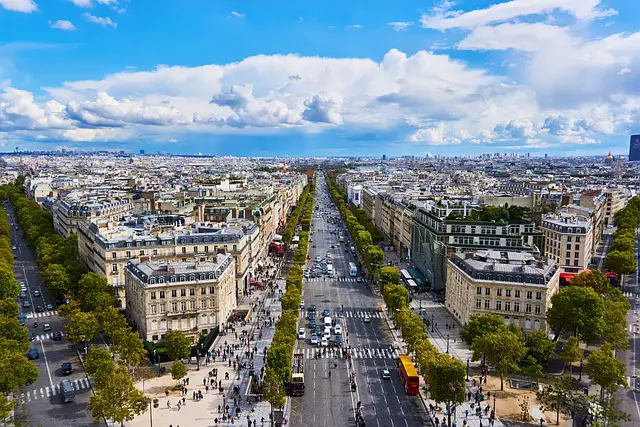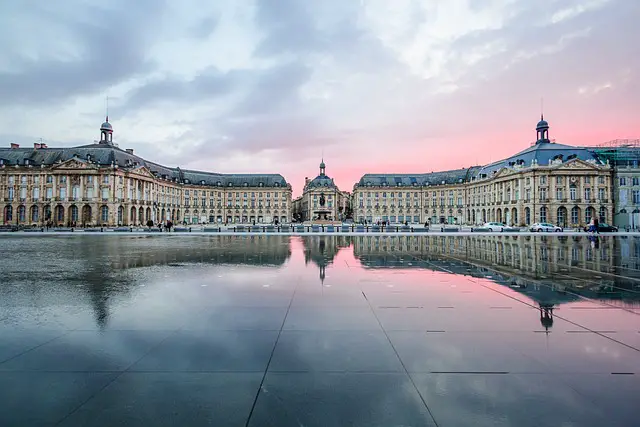The Louvre is home to countless incredible works of art. It is impossible to see everything in one visit! To help you find your way through all this beauty, I’ve listed 20 of the most stunning paintings on display. Thanks to this article, you won’t miss any of the museum’s highlights!
Plan to buy your tickets in advance to give yourself as much time in the museum as possible!
Liberty Leading the People – Eugène Delacroix
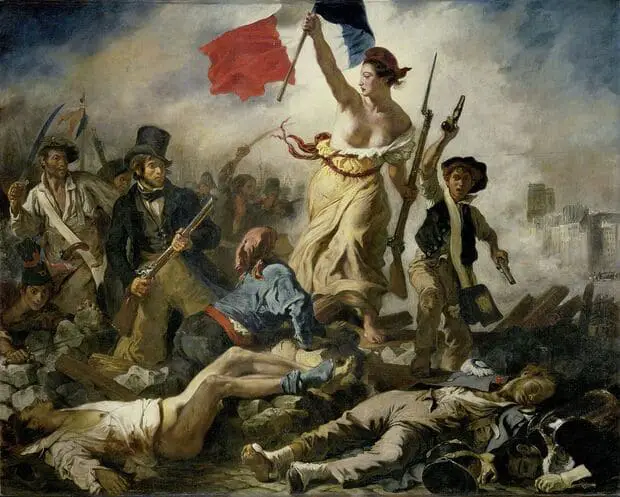
Location: Level 1, Denon Wing, Room 700 Mollien Romanticism
It would almost be a sin to go to the Louvre and not see Liberty Leading the People.
Painted during the July Revolution, it depicts freedom as a woman waving the French flag.
We can also see French people holding weapons and the bodies of those who died during the battle.
If you’ve read Les Misérables by Victor Hugo, you’ll understand the significance of Delacroix’s painting.
The Raft of the Medusa – Théodore Géricault
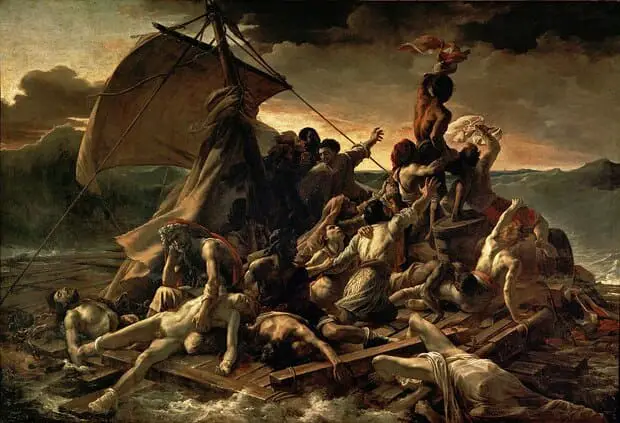
Location: Level 1, Denon Wing, Room 700 Mollien Romanticism
You’ll shiver while looking at this depiction of a tragic moment in French naval history.
The painting tells the story of the sinking of the frigate Medusa. The visitor can only imagine the series of horrendous hardships that the crew went through in order to survive.
Géricault breaks away from the topics that artists traditionally represented in paintings to depict a powerful image of human despair.
The Coronation of Napoleon – Jacques-Louis David
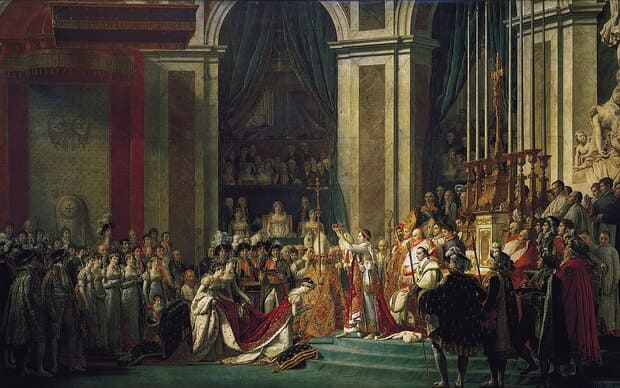
Location: Level 1, Denon Wing, Room 702 Daru Neoclassicism
France has a special relationship with Napoleon. For that reason, you must take the time to see the massive painting representing the coronation of Napoleon.
As the emperor’s official painter, Jacques-Louis David had to immortalize this important event in French history. He didn’t think twice before choosing the dimensions of The Coronation. Indeed, they are nearly beyond reason!
It leaves plenty of room to represent Napoleon wearing his imperial regalia and holding his wife’s crown between his hands. There’s so much meaning to this painting, but I will keep it short: go see it.
The Wedding Feast at Cana – Paolo Veronese
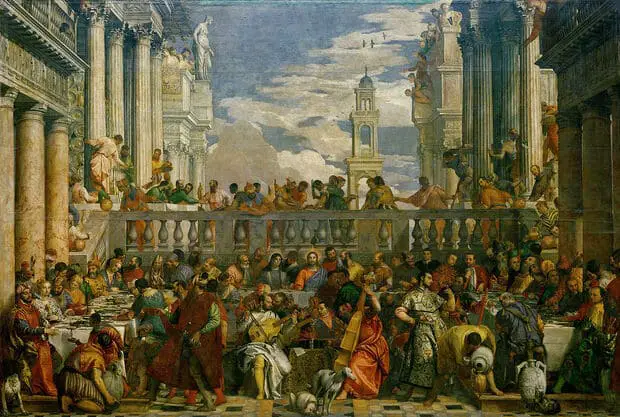
Location: Level 1, Denon Wing, Room 711 Mona Lisa Room
Another massive painting, The Wedding Feast at Cana, will also leave a deep impression on you.
It represents the story in the Bible of the same name. On the canvas, we can see amphoras filled with wine and glasses overflowing with liqueur.
Veronese’s painting provides a stunning visual representation of the first miraculous sign of Jesus: turning water into wine.
Portrait of Madeleine – Marie-Guillemine Benoist
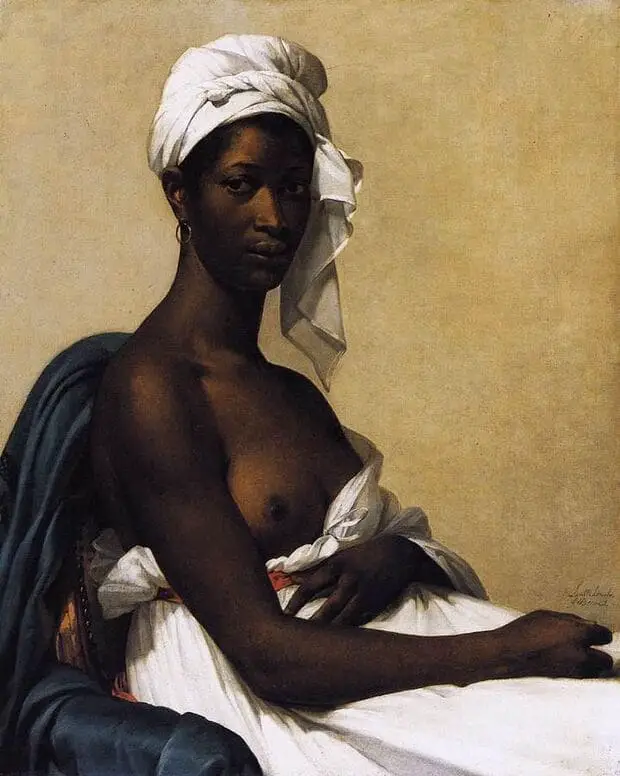
Location: Level 2, Sully Wing, Room 935 Jacques-Louis David and His Students, The Art of Portraiture
Recently renamed, Portrait of Madeleine is unique for two reasons.
First, a woman painted it. A fact rare enough at the time she painted it, for it to be noticed and talked about.
Second, the model is a black woman. At that time, portraits of non-white people weren’t very popular.
One also has to admire the way the artist represented Madeleine’s skin. At the time she lived, very little was known or taught about painting dark skin.
La Grande Odalisque – Jean-Auguste-Dominique Ingres
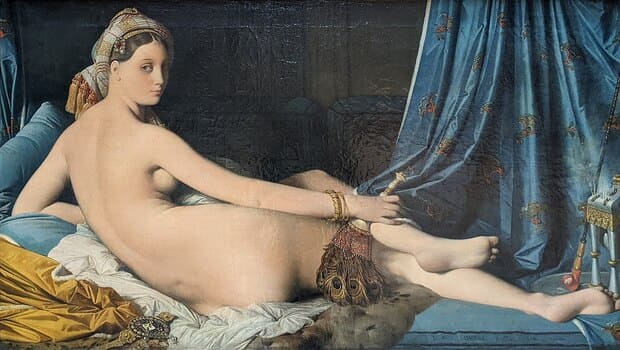
Location: Level 1, Denon Wing, Room 702 Daru Neoclassicism
This painting by the orientalist artist Jean-Auguste-Dominique Ingres became famous because of the subject’s disproportionate limbs.
Indeed, her back is particularly long and her left leg is in an unnatural position.
Eastern accessories surround the young woman to show that she lives in a harem.
The Card Sharp with the Ace of Diamonds – Georges de La Tour
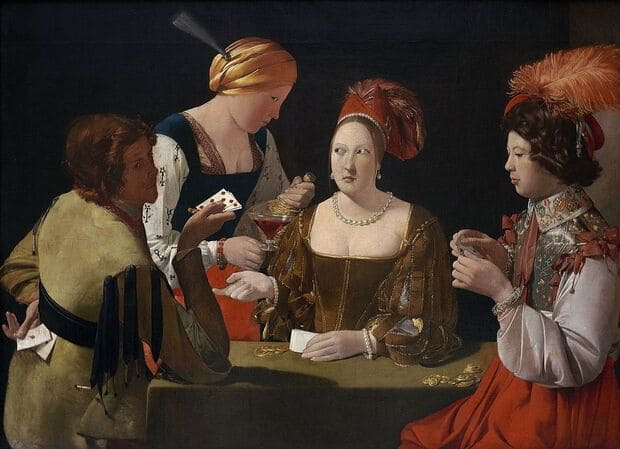
Location: Level 2, Sully Wing, Room 912 Georges de La Tour and Le Nain Brothers
This is actually a rather amusing painting. Indeed, the visitor witnesses the dishonest behavior of the player on the left. You’ll notice that he is hiding some cards behind his back.
The looks the characters exchange reveal the true goal of the game: to rob the young player on the right.
La Tabagie – Louis Le Nain
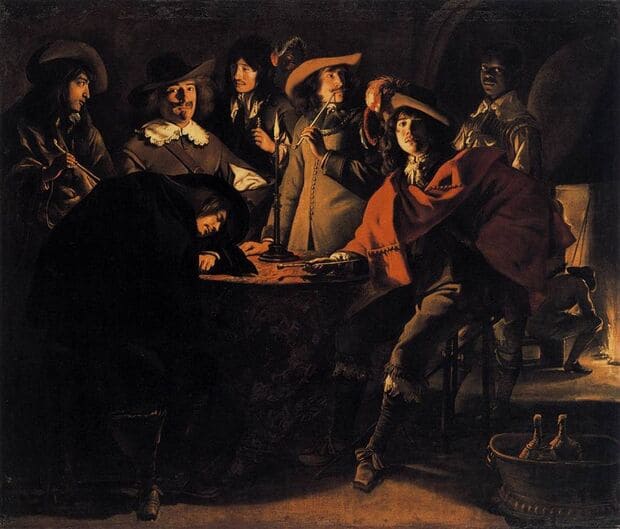
Location: Level 2, Sully Wing, Room 912 Georges de La Tour and Le Nain Brothers
Once considered a masterpiece of nocturnal painting, the chiaroscuro used in La Tabagie still captivates viewers today.
At nightfall, guards gather around the light of a candle to enjoy the pleasures of tobacco.
It’s late and it’s hard to resist sleepiness. As you may see, one of the soldiers has already succumbed. Indeed, he is sleeping peacefully on the table.
The viewer gets the impression that they witness some private meeting.
Joan of Arc at the Coronation of Charles VII – Jean-Auguste-Dominique Ingres
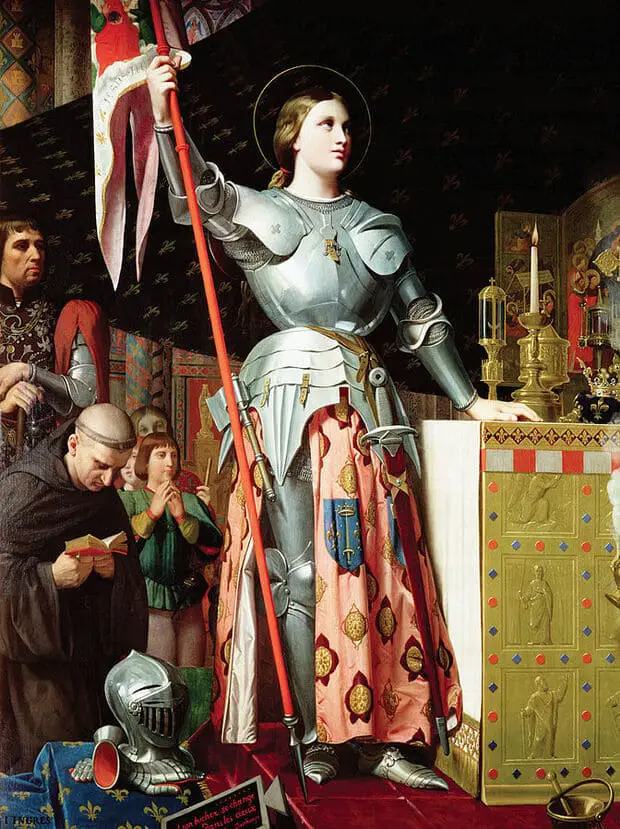
Location: Level 1, Denon Wing, Room 700 Mollien Romanticism
Joan of Arc is one of France’s most popular historical figures.
As both a warrior and a saint, the woman was always in the minds of the people at that time.
In this depiction, she wears an armor with her eyes looking up and a halo above her head.
Portrait of the Artist Holding a Thistle – Albrecht Dürer
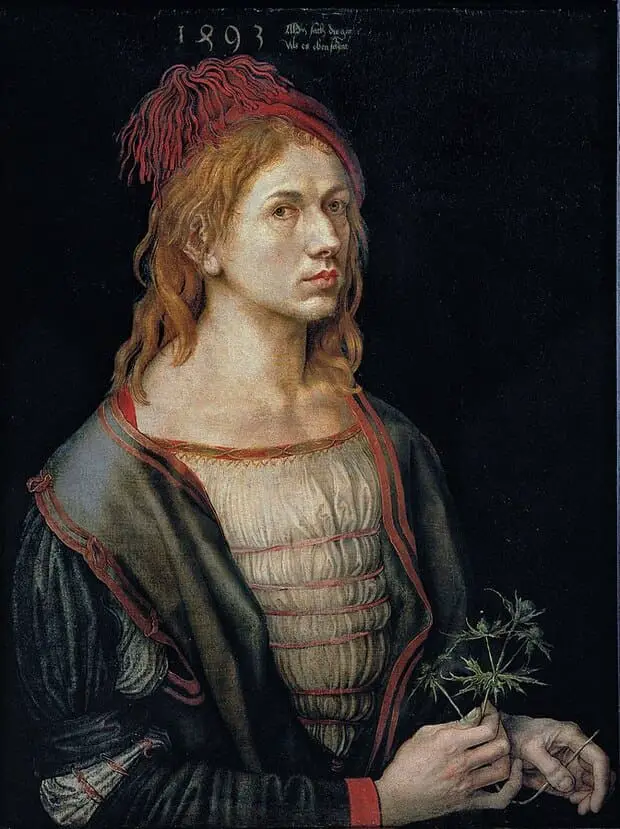
Location: Level 2, Richelieu Wing, Room 809 Germany, 16th Century
As the only piece by Albrecht Dürer on display in the Louvre, his self-portrait is a must-see.
Intended as a gift for his future wife, the painting contains references to the passion of Christ. Indeed, the artist holds a thistle and there’s a rather eloquent writing at the top of the canvas.
Le Printemps, ou Zéphire et Flore couronnant de fleurs Cybèle – Antoine François Callet
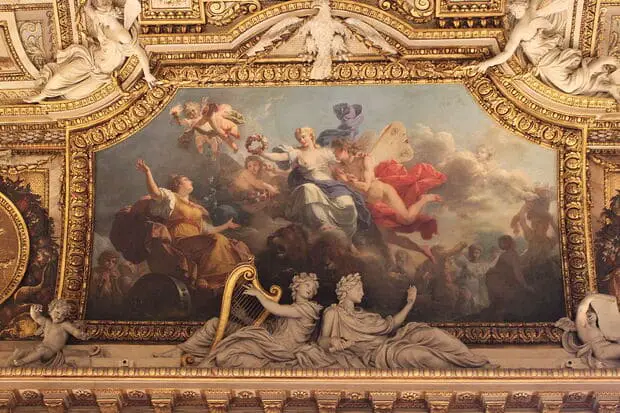
Location: Level 1, Denon Wing, Room 705 Apollo Gallery
Painted on the ceiling, the work of art is a soft depiction of Ancient Greek mythical figures.
The clouds and winged beings remind us of Zephyrus’ nature: he is the west and northwest winds.
The light and cheerful atmosphere of the scene will almost give you wings.
The Birds – Georges Braque
Voir cette publication sur Instagram
Location: Level 1, Sully Wing, Room 662 Henry II
The Birds is the museum’s most surprising painting.
Painted in 1953 by Georges Braque, The Birds proudly hangs above visitors’ heads in the Henry II room.
Sometimes criticized and sometimes praised, Braque’s birds will not please everybody.
In a starry sky, two black birds are clearly outlined for visitors who might wonder where they’re going.
Magdalene with the Smoking Flame – George de La Tour
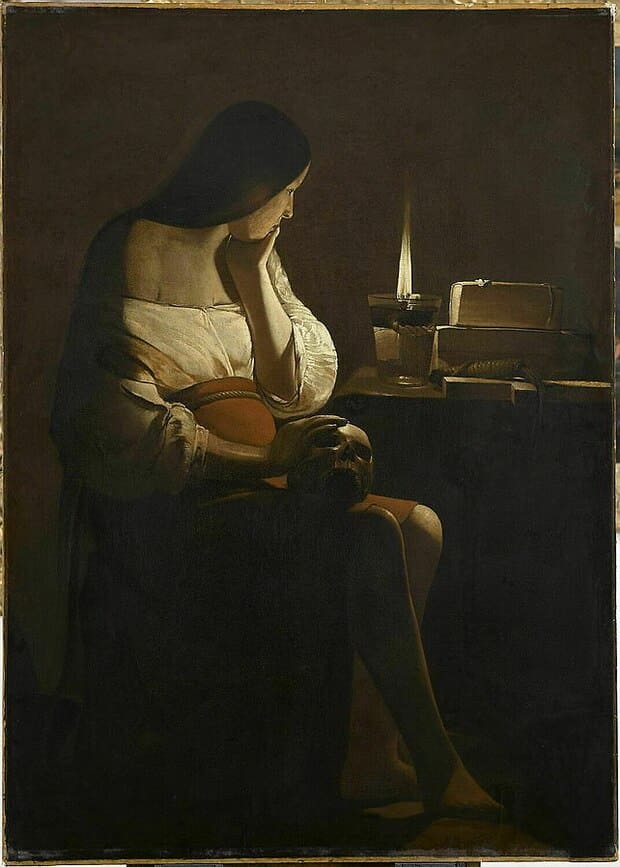
Location: Level 2, Sully Wing, Room 912 Georges de La Tour and Le Nain Brothers
The painting represents Saint Magdalena. Seated and lost in thought, she looks at the flame of a candle.
Her right hand is on a skull and there are two thick books on the table.
The various elements in the painting remind us of the vanitas: death, the brevity of life, and knowledge.
The Interesting Student – Marguerite Gérard
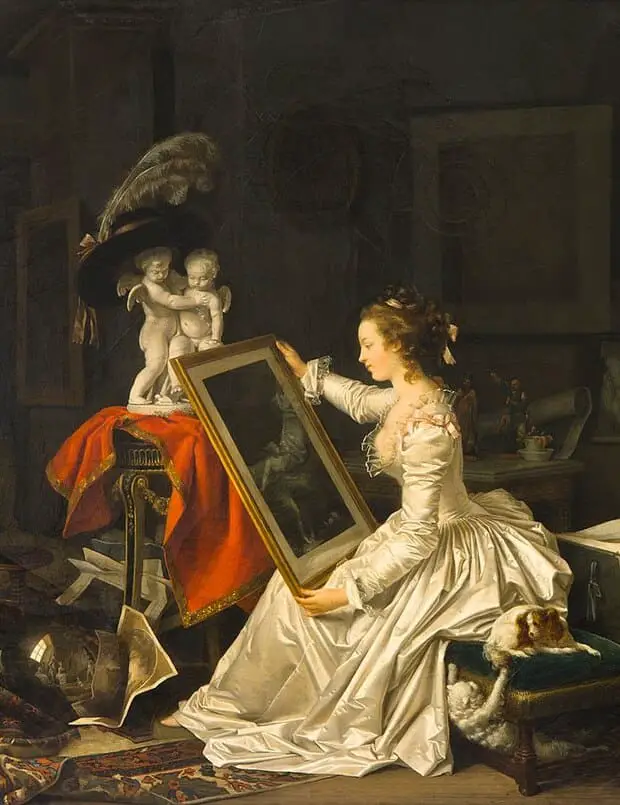
Location: Level 2, Sully Wing, Room 929 Jean-Honoré Fragonard
Another painting by a female artist, The Interesting Student is a true gem.
We see a young lady, probably the painter, looking at herself in a mirror.
Not only are the reflections and proportions perfectly mastered, but also the way the dress falls. Besides, the placement of the light’s effects underlines how talented an artist Marguerite Gérard was.
Pandemonium – John Martin
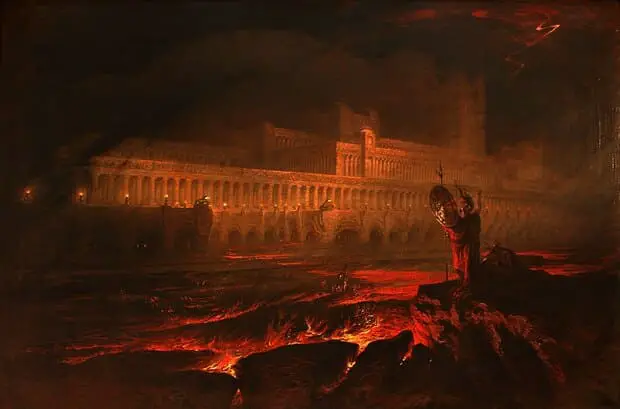
Location: Level 1, Denon Wing, Room 713 United Kingdom/United States of America
Inspired by John Milton’s poem Paradise Lost, Pandemonium is an illustration of the capital of Hell.
It depicts the beginning of the poem when Satan gathers his troops in Pandemonium to fight against the divine forces.
The Lord of Hell appears on the right of the painting; we easily identify him thanks to his horns.
Two Tax Collectors – Marinus van Reymerswaele
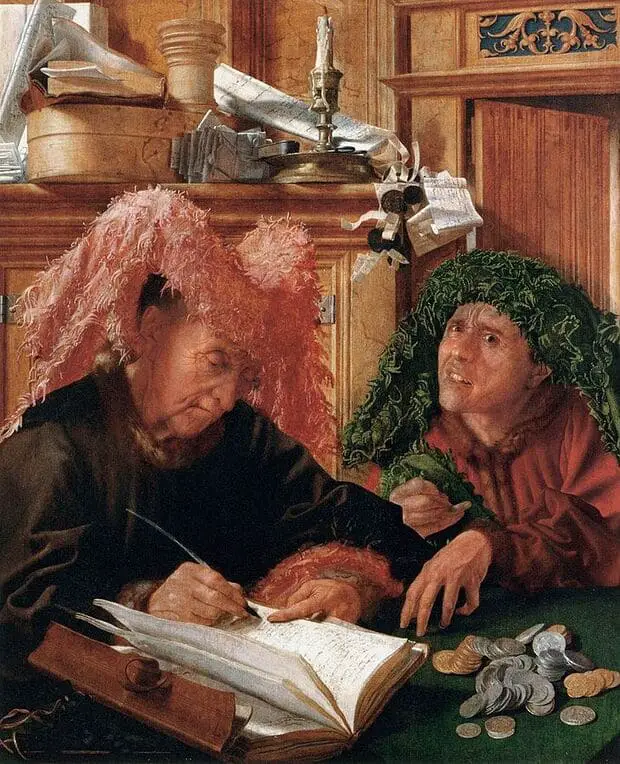
Location: Level 2, Richelieu Wing, Room 814 Humanism and Reformation
Two Tax Collectors is a caricature by the Flemish artist Marinus van Reymerswaele. This depiction serves only one goal: to make fun of the people who work in tax collection.
The viewer’s eyes are first drawn to the colorful and strangely textured headdresses that both men are wearing.
The artist worked on the facial expression of the tax collector on the right to make him look very unpleasant. Moreover, the mess of paper above the wardrobe stresses the greediness of such people.
You’ll probably have a good laugh while looking at Two Tax Collectors.
Gabrielle d’Estrées and One of Her Sisters
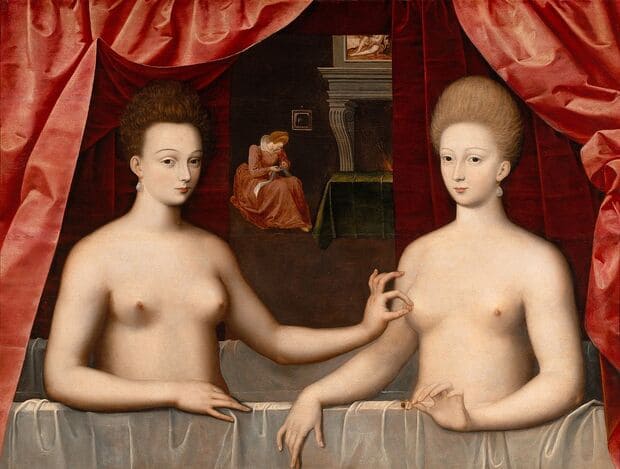
Location: Level 2, Richelieu Wing, Room 824 Second Fontainebleau School
This painting is famous for its strangeness: who touches their sister’s nipple with such precision? No one – that’s why people gave so many interpretations to try to explain what’s going on in the painting.
If you look closely, a painting of a man is hanging on the back wall. One interesting detail regarding this decoration, the man depicted only has a red sheet to hide his genitals. In the foreground, we see Gabrielle d’Estrées pinching the nipple of the duchess de Villars while taking a bath.
One interpretation of the painting is that it announces the duchess’ pregnancy, as she was Henry IV’s mistress.
Seated Nude – Christoffer Wilhem Eckersberg
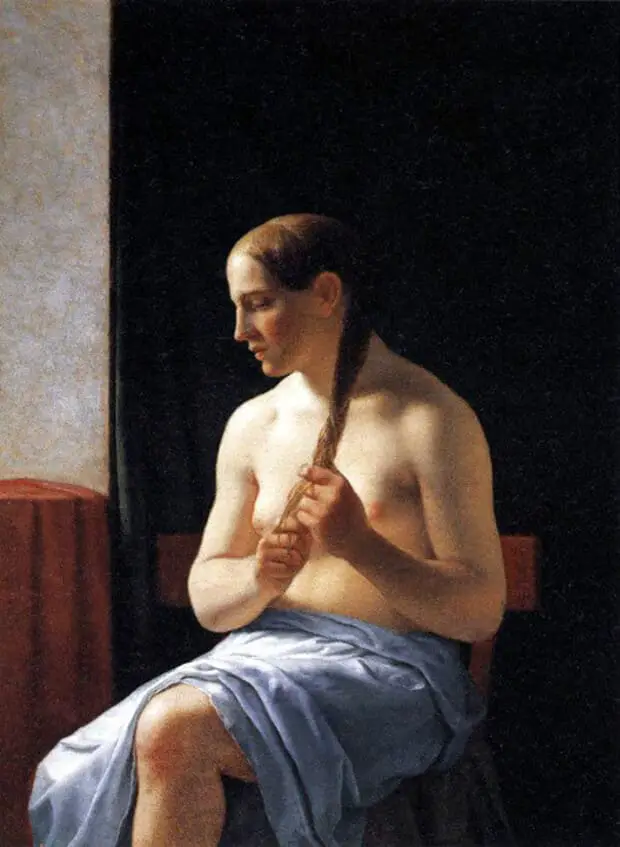
Location: Level 2, Richelieu Wing, Room 862 Scandinavian Countries
Seated Nude is a fairly basic painting by the Danish artist Eckersberg, but it will definitely draw your attention.
The young woman who is braiding her hair is the model Trine Nielsen. We see her half-naked, seated on a chair while looking down as if lost in her thoughts.
A wood-like strip frames the painting, which suggests that the viewer sees the woman through a looking glass.
Last Judgment – Jacob Jordaens
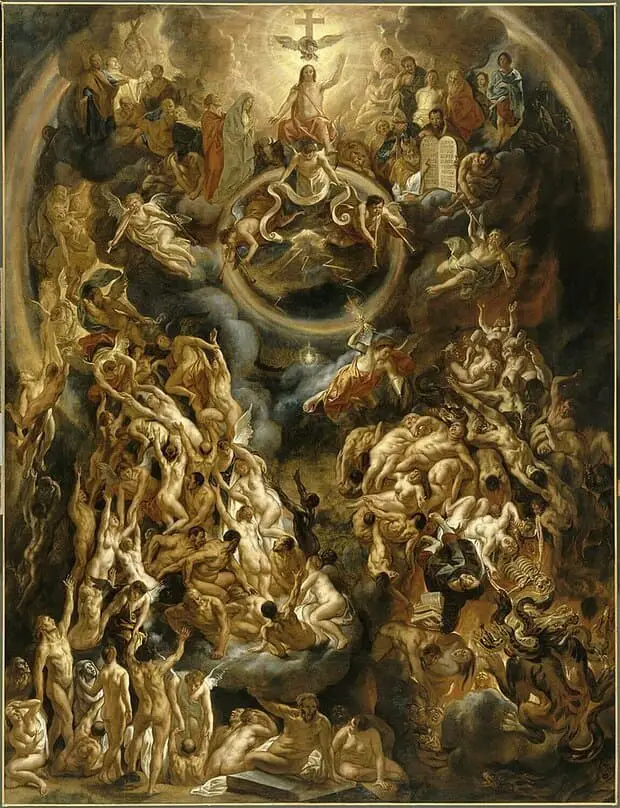
Location: Level 2, Richelieu Wing, Room 800 Paintings, Northern Europe
The Last Judgment is a classic biblical topic when it comes to paintings. That’s probably why the Flemish painter Jacob Jordaens decided to represent this famous passage.
There are two ways to read this painting: vertically and horizontally. On one side are those God will save, and on the other are those God will damn.
Mona Lisa – Leonardo Da Vinci
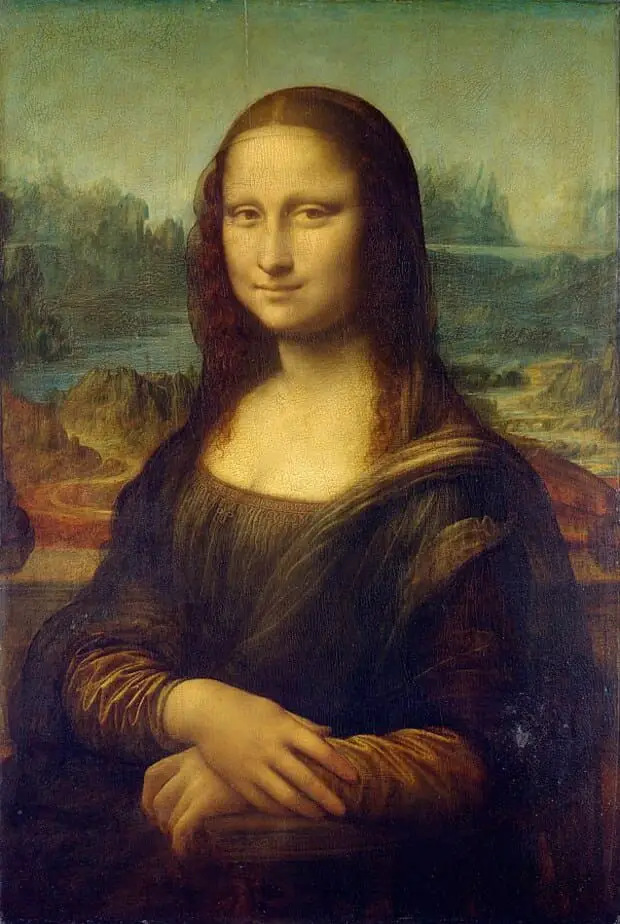
Location: Level 1, Denon Wing, Room 711 Mona Lisa Room
Do I really need to introduce the Mona Lisa?
The famous portrait painted by Leonardo Da Vinci never ceases to enthrall visitors from all over the world.
You’ll always remember her mysterious smile and her gaze that seems to follow your every move.
>> Link to book an online ticket for the Louvre (booking a time slot is required)
I aim to share my tips and recommendations for the beautiful country of France. My goal is to help you plan your next adventure, whether it’s a weekend getaway or a once-in-a-lifetime trip. From finding the best hotels and restaurants, to discovering unique activities and sights, I’ve got you covered!



